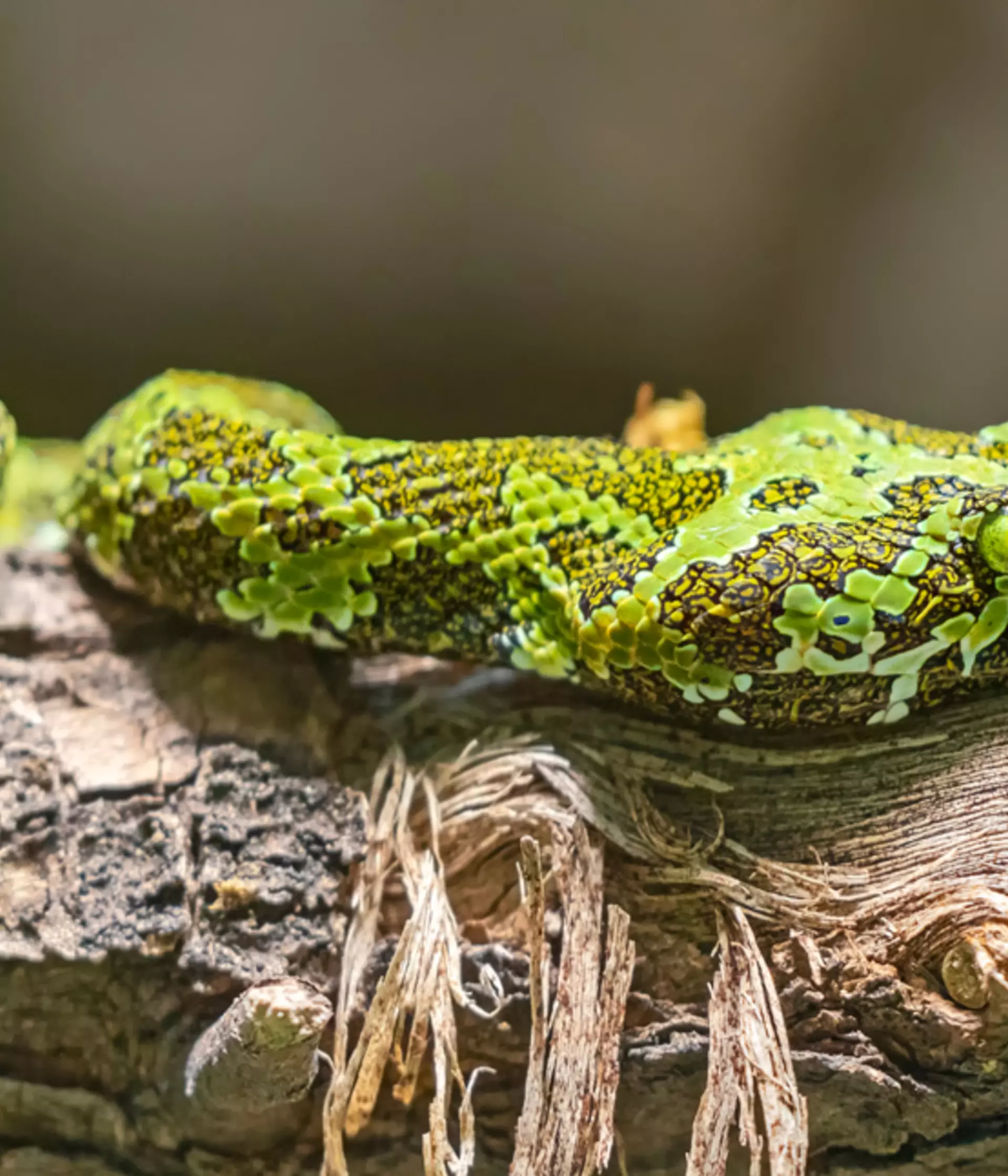Venomous snakes
Mangshan pit vipers are one of the rarest of all snakes and were only identified by the scientific world in 1990. They're extremely well camouflaged and found solely within a 115-square-mile area of densely forested mountains on Mount Mang in southeast China, the mountain sits on the border between Hunan and Guangdong provinces. Mangshan vipers are large snakes, reaching just over 2 metres in length and weigh up to 4 kg and they're both highly venomous and extremely quick.
Mangshan vipers have one of the highest venom yields of any snake and currently there is no anti-venom for their species. As pit vipers, they detect heat using loreal heat pits and they have large fangs which a help them take down prey. Mangshan vipers are ambush predators that feed on birds and rodents, and are able to use their tail as a lure to bring prey into striking range by wiggling it about to attract their prey. This species is egg laying and it lays between 20-27 eggs.
Mangshan viper threats
The exotic pet trade is one of the biggest threats to Mangshan vipers, as their striking colours make them sought after by hobbyists. The international trade in this species is now regulated by CITES. Deforestation between the 1950s and the 1980s has reduced their habitat, and there may only be 500 remaining in the wild.
